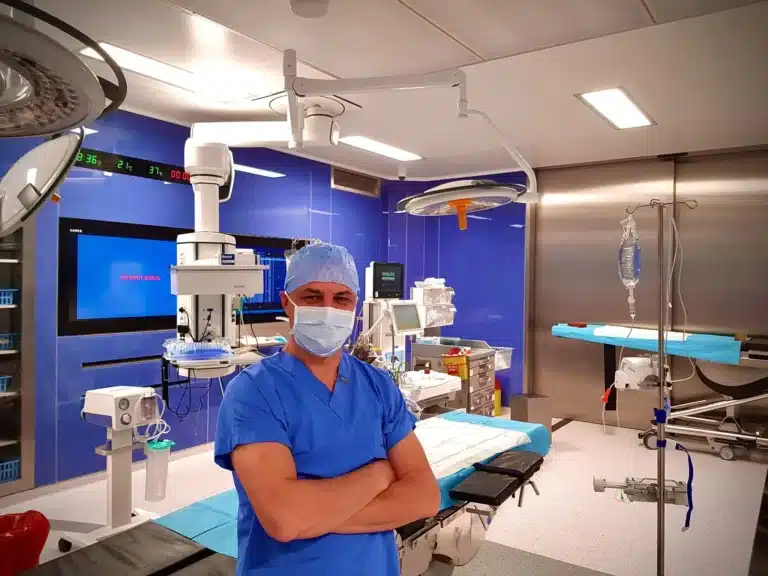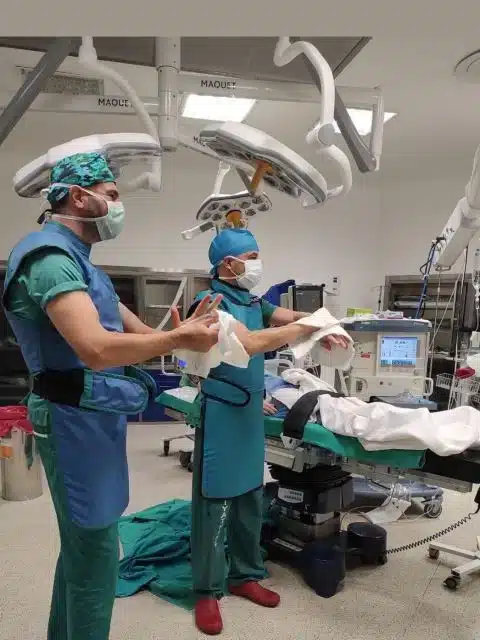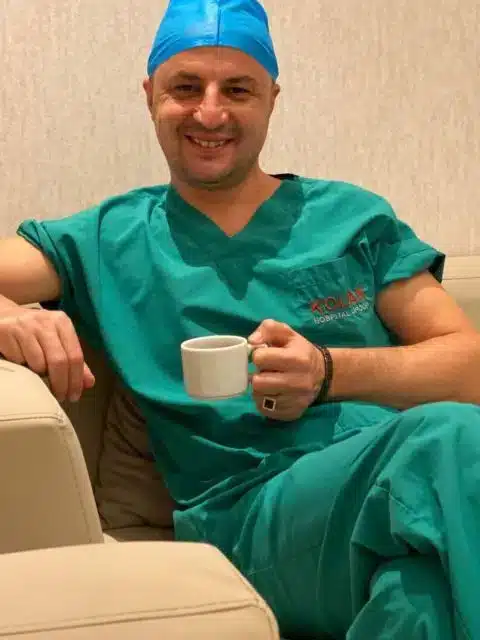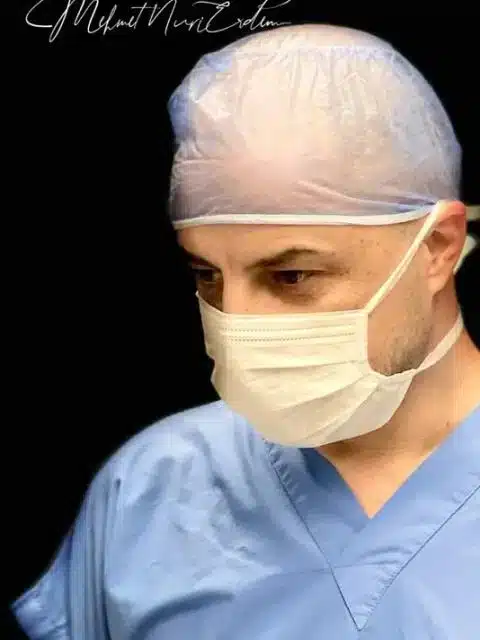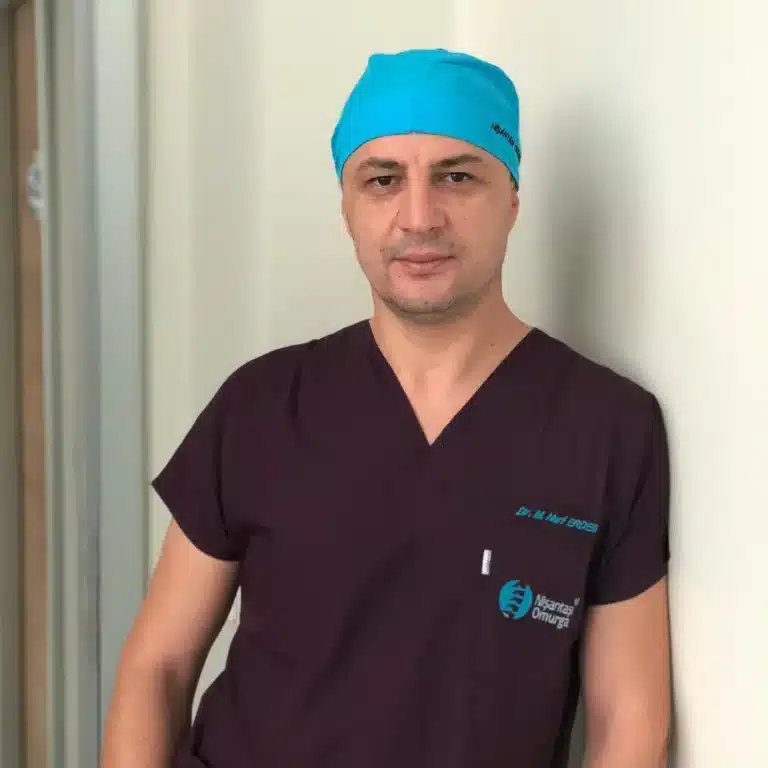Of course, scoliosis surgeries, which are the subject of this article, have their own characteristics.
Here, I would like to inform you about the routine surgery hospital process of Adolescent Idiopathic Scoliosis, that is, adolescence scoliosis of unknown cause.
The decision phase of this surgery is a separate issue, and I shared this with you in another article that is “scoliosis diagnosis and preparation for surgery”.
Should We Be Afraid of Scoliosis Surgery?
In fact, we should be afraid of every surgery, because we know that there is no surgery without risk.
But when we, as physicians, recommend surgery to patients and their relatives, we simply decide by looking at a balance of benefit-harm.
We share with you in detail the benefits and possible harms (complications) that you will get as a result of this process.
In any case, we do not approve to make an operation plan without establishing a relationship of trust between the patient and the physician.
Prior to examine the details of the hospital process, I would like to point out that all those stages will be under the supervision of the physician. In addition, one of the nurses in our team will visit you regularly throughout the day and will help you get through this process in the easiest and most comfortable way by working in coordination with the service nurses.
Surgery day (Day O)
Detailed information about the procedures performed in the operation can be found in the article “details of scoliosis surgery”. The surgery takes about 4-6 hours, depending on the type of scoliosis. It is not possible to give an exact time here, but I would like to state that we, spine surgeons, are not obsessed with the duration. This is a frequently asked question, but remember that the duration does not matter to get the best results. During the surgery, at certain stages, information is given to the relatives of the patients by phone. Because we know how difficult this waiting period is for parents.
The patient is taken to the intensive care unit for one day after the operation. Although this approach varies in various ecoles; our preference is to spend the first night in intensive care especially for pain control and close follow-up of the patient. In the intensive care unit, the patient is warmed up, because the operating rooms are cold, they are monitored, hemodynamically stabilized (blood pressure, pulse etc.) and all biochemical parameters are closely observed. In the evening, one of the patient’s relatives visits the patient in the intensive care unit and is informed about the patient’s condition.
Following Day (Day 1)
The next day after the surgery, the patient is evaluated in the intensive care unit by both the spine surgeon and the anesthesiologist responsible for the intensive care and taken to the service. The first thing to say about service care is the patient’s connection apparatus(the drain coming out of the wound, the urinary catheter and the vascular access). These are necessary and they will all be removed in due course. After the patient comes to the service, his/her general condition is stabilized and raised to his/her feet. The aim is to make the patient walk in the room. We definitely accompany the first stand up, and we teach the relatives of the patients how to get up and go to bed. On the first day, the patient can turn left and right in bed and should stand up and walk around the room at least twice. The most pain medication needs are on this day. All along your hospital stay, you will be given a gradually decreasing dose of painkillers by the nurses to control your pain.
Day 2
The patient will feel much more comfortable. Blood is taken from the patient to check blood values in the morning and the necessary treatments are applied according to the results. From now on, s/he will continue to walk not only in the room, but also in the corridor. These walks will also be under the supervision of auxiliary health personnel. The patient should stand up and walk at least 3-4 times on the 2nd day.
Day 3
During the morning visit, the patient’s drains and urinary catheter are removed. The vascular access will remain inserted during your stay in the hospital so that the necessary treatments can be performed. It’s much easier to move around now as the connections are out. Now you are expected to spend time not only walking down the aisle, but also sitting on the couch in your room. Control x-rays are taken and the surgery is evaluated and shared with the patient and their relatives.
Day 4
The patient is discharged. One of the most frequently asked questions is how long to stay in the hospital. The information given to you in this article is the story of a unexceptional scoliosis surgery. Although rare, some patients may recover faster and be discharged earlier, while others may be discharged longer. Here, the best approach is to decide on a patient-specific basis. We, as a team, do not allow any patient to be discharged from the hospital earlier than needed. However, it should be noted that staying in hospital longer than necessary is also dangerous due to the possible risk of infection.
We try to answer all the questions in the minds of the patients and their relatives while they are discharged. Prohibitions and exercises are taught to you once again. You will be told how to use the medicines on your prescription. You can review our article “post discharge in scoliosis surgery” for the post-hospital process.
Since the operation process frightens both the patient and the parents, I tried to briefly explain what is happened. Considering the benefits that this surgery will bring to you, I would like to point out that this process is undoubtedly a mighty stage that must be overcome, but you should not be afraid.
We, both physicians and our team members, will support you throughout the entire process.
